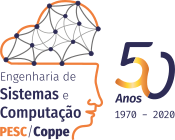Relp Surfing: Um Fframework para o Relacionamento de Páginas WEB
Autores
|
6176 |
2353,200
|
|
|
6177 |
2353,200
|
Informações:
Publicações do PESC
Este trabalho consiste em procurar páginas Web semelhantes usando a estrutura dos links na Web. Mais especificamente, dada uma página Web, a qual chamamos de página atual em alusão ao fato de que tipicamente esta é a página atualmente sendo visitada por um usuário, procuramos na estrutura dos links encontrar outras páginas Web que são semelhantes à atual. Modelamos a Web como. um grafo direcionado, ao qual chamamos de grafo Web. Cada nó desse grafo representa uma página Wb e as arestas representam os links entre as páginas Web. Introduzimos um algoritmo que realiza uma busca aleatória nesse grafo começando pela página atual. A ideia básica é atribuir pesos às arestas desse grafo de forma a fazer essa busca tender em direção às páginas Web que são mais semelhantes à atual. Nesse trabalho, discutimos três métodos para atribuir pesos as arestas. Nosso algoritmo lembra e, de fato, é inspirado em outros algoritmos; porém ele vai além por explorar mais profundamente o grafo Web, permitindo que a busca aleatória alcance nós relativamente mais distantes da página atual.
Tbis work consists of searchíng for similar Web paga using the siructure of the links in the Web. More specifically, we are given a Web page, which we call the current Web page in allusion to the fact that it is typically the Web page being currently visited by a user, and search this link structure to find other Web pages that are similar to the current one. We model the structure of the Web as a weighted directed graph, to which we refer as the Web graph. Each node of the Web graph represents a Web page and its edges represent the links between Web pages. We introduce an algorithm that performs a kind of random walk on this graph starting from the node that represents the current Web page. The basic idea is to set up the weights of the edges in such a way to bias the random walk towards the nodes that tend to be more similar to the current Web page. In this work we discuss three methods for attributing weights to the edge. Our algorithm resembles and in fact is inspired in previous works; it extends on those works by exploring the Web graph more thoroughly, allowing the random wallc to reach nodes that are further away from the current Web page.




